Last update:
Neuroscience news
Neuroscience
Visual experiences unique to early infancy provide building blocks of human vision, study finds
What do infants see? What do they look at? The answers to these questions are very different for the youngest babies than they are for older infants, children and adults. Characterized by a few high-contrast edges in simple ...
5 hours ago
0
1
Neuroscience
How the brain is flexible enough for a complex world, without being thrown into chaos
Every day our brains strive to optimize a tradeoff: With lots of things happening around us even as we also harbor many internal drives and memories, somehow our thoughts must be flexible yet focused enough to guide everything ...
7 hours ago
0
56
'What was that?' How brains convert sounds to actions
You hear a phone ring or a dog bark. Is it yours or someone else's? You hear footsteps in the night—is it your child, or an intruder? Friend or foe? The decision you make will determine what action you take next. Researchers ...
8 hours ago
0
27
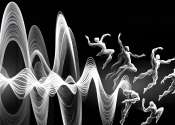
Psychological therapy shows promise in improving quality of life for people living with motor neuron disease
The largest-ever trial of a psychological intervention for patients with motor neuron disease (MND), conducted by researchers at the University of Sheffield and UCL, found that acceptance and commitment therapy (ACT) improves ...
9 hours ago
0
6

Unobtrusive, implantable device could deepen our understanding of behavioral responses
Much of what we know about neurological and psychiatric disorders in humans can be traced back to foundational studies of how animals, such as mice, learn and adapt to various situations. Studying behavioral responses has ...
9 hours ago
0
5
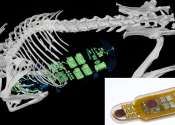
Using MRI, engineers have found a way to detect light deep in the brain
Scientists often label cells with proteins that glow, allowing them to track the growth of a tumor, or measure changes in gene expression that occur as cells differentiate.
9 hours ago
0
25
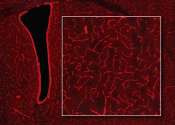
Study points to personalized treatment opportunities for glioblastoma
A study appearing in Cancer Cell uncovers the evolutionary dynamics of glioblastoma recurrence through proteogenomic analysis, offering potential therapeutic avenues.
6 hours ago
0
0

Flicker stimulation shines in clinical trial for epilepsy
Biomedical engineer Annabelle Singer has spent the past decade developing a noninvasive therapy for Alzheimer's disease that uses flickering lights and rhythmic tones to modulate brain waves. Now she has discovered that the ...
10 hours ago
0
15
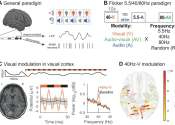
Researchers create AI model to understand how brain activity relates to illness
A team of researchers at Baylor College of Medicine and Yale University incorporated generative artificial intelligence (AI) to create a foundational model for brain activity. The Brain Language Model (BrainLM) was developed ...
7 hours ago
0
3

RFK Jr. says a parasite ate part of his brain. Do parasites actually 'eat' human tissue?
Robert F. Kennedy Jr.'s campaign says a parasitic worm the presidential candidate contracted years ago while traveling outside of the United States ate a portion of his brain, then died.
6 hours ago
0
0

Sex headaches: A pain in the neck or something more sinister?
The last thing anyone wants is for sex to be a headache. For some people, though, an increase in sexual excitement can be a real pain in the neck.
7 hours ago
0
0

Study shows that astrocytes integrate information about past events in their soma
Neurons are known to communicate and integrate information they receive from their dendrites, branch-like structures extending from their body. In contrast, the activity in astrocytes, a class of star-shaped glial cells found ...
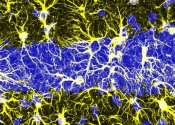
Human brain map contains never-before-seen details of structure
A cubic millimeter of brain tissue may not sound like much. But considering that tiny square contains 57,000 cells, 230 millimeters of blood vessels, and 150 million synapses, all amounting to 1,400 terabytes of data, Harvard ...
May 9, 2024
0
44

High school student helps transform 'crazy idea' into a model that can predict neurotransmitters
Like many good ideas in science, it started with a walk in the woods. During a stroll through the Berlin Botanic Garden in 2019, HHMI Janelia Research Campus Group Leader Jan Funke and some of his scientific colleagues started ...
May 9, 2024
0
25
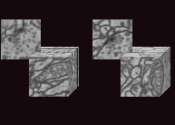
Study identifies primary cause of sensory hypersensitivity in a mouse model of autism spectrum disorder
A research team led by Director Kim Eunjoon of the Center for Synaptic Brain Dysfunctions and Director Kim Seong-Gi of the Center for Neuroscience Imaging Research within the Institute for Basic Science (IBS) has identified ...
May 9, 2024
0
129

Some brain tumors may be linked to head injury, mouse study suggests
A study in mice by researchers at the School of Medicine indicates that brain injury can lead to brain tumors in susceptible individuals. For this study, they used mice that model people with neurofibromatosis type 1 (NF1), ...
May 9, 2024
0
0

Researchers investigate the relationship between perceived glossiness and pupillary responses
The association between perceived glossiness and pupillary response has previously been elucidated through a collaborative effort involving the Cognitive Neurotechnology Unit and the Visual Perception and Cognition Laboratory ...
May 9, 2024
0
0
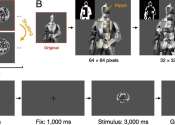
The impact of escalating environmental and social challenges on our brains and the planet
A team of neuroscientists have studied the impact of escalating environmental and social challenges on both our brains and the sustainability of the planet. The expert team is led by Dr. Agustin Ibáñez from the Global Brain ...
May 9, 2024
0
12

Brain study identifies a cost of caregiving for new fathers
Parenting makes the heart grow fonder, and the brain grow … smaller? Several studies have revealed that the brain loses volume across the transition to parenthood. But researchers like me are still figuring out what these ...
May 9, 2024
0
0

New study offers insight into genesis of spina bifida
A group of researchers at the University of California San Diego School of Medicine have led an investigation that offers new insight into the causes of spina bifida, the most common structural disorder of the human nervous ...
May 8, 2024
0
12




















